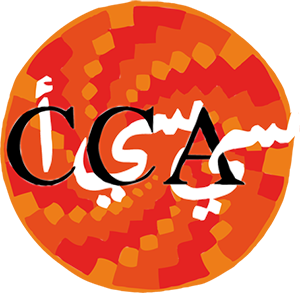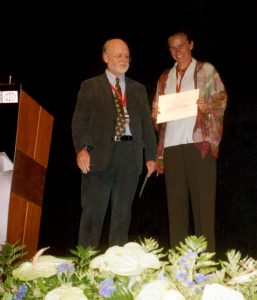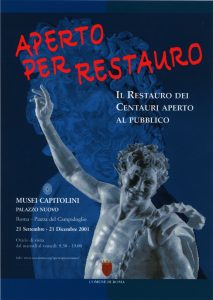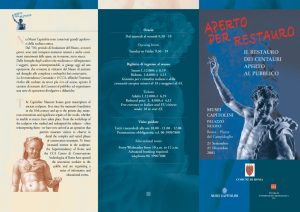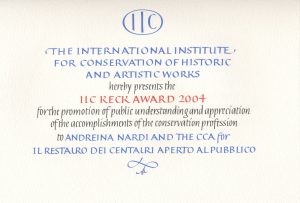In 2004, Andreina Costanzi Cobau received the Keck Award from the IIC in London for the best public information initiative with the project: “Open for Restoration, preservation of the Centaurs of the Capitoline Museum in Rome.”
The Keck Award is a prize generously donated by Sheldon and Caroline Keck through the IIC Council. It is given every two years to individuals or groups that have contributed effectively in promoting public understanding and appreciation in the field of conservation.
The opportunity to conserve the major sculptures of the Centaurs from Hadrian’s Villa in one of Rome’s most heavily visited museums (tourists and school groups) provided an occasion to develop a cultural project to promote the profession, running parallel to the conservation treatment. The conservation worksite took place in 2004 in one of the halls of the Capitoline Museum. The work area was set up with a platform around the statues, surrounded by information panels for the public. During the project’s five months, visitors could watch the work in progress, interact directly with the conservators, and receive historical, technical and general information from panels and a brochure. Two competitions – photographic and literary – were organized for schools in order to directly involve the younger generations. Through compositions produced by students in Roman schools, we hoped to transmit the importance of conserving our common archaeological heritage, stimulate sensations and reflections on a topic that is still not often covered in schools, and strengthen the memory of a visit to see a live conservation treatment. The “Open for Restoration” program was announced through a press conference and a publicity campaign on public transport in the capital and other areas the city made available.
Five hundred school groups visited the worksite while the conservation proceeded; among those, 121 students of various ages participated in the photo contest, and 95 in the writing contest. A jury of prominent individuals in the relevant fields leaded by the writer Susanna Tamaro then selected five winners in each category. The prize – a certificate and publication of their works in a book and a coupon to buy books at the museum book-store – was awarded to the young winners in the museum hall in the presence of the mayor and members of the city government. The reasons for the CCA’s award were highlighted during the award ceremony in London at the end of the IIC congress: In the evolution of the relationship between the work of art, the conservator and the public, the “Open for Restoration” project introduced three new noteworthy elements: the public was encouraged to change its attitude from passive to active during the visit, participating actively through reflection and direct contact with both the work in progress and the conservators; the museum direction realized that direct participation of the public in conservation is an integral part of the work and is easily replicated and economically viable; the political authorities saw that by contributing to conservation programs their image benefits in return.
